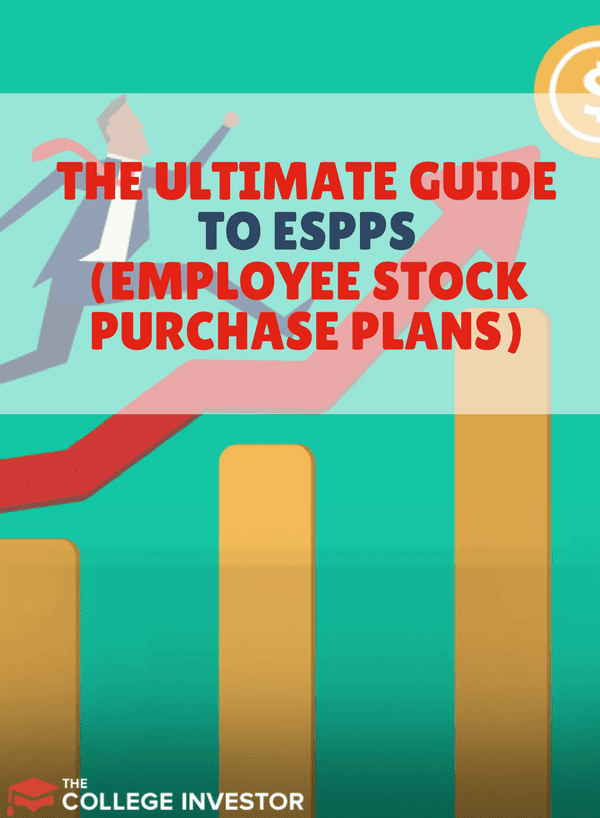
An ESPP, or Employee Stock Purchase Plan, allows employees of a company to purchase stock in the company - usually at a discount.
At first glance, you might think your employee stock purchase plan is just a matter of contributing money to it each month. But once you start peeling back the layers, there’s far more to it.
There are three main areas to be aware of in ESPPs: Company match, purchase period, and look back.
“Once you have those three key pieces of information, it becomes very evident whether it makes sense to participate,” Emily Cervino, a vice president in Fidelity’s stock plan services group, told Forbes.
This guide will help you to get the most out of your ESPP and navigate the various language common to these plans.
ESPP Meaning: What Is An Employee Stock Purchase Plan (ESPP)
An ESPP allows you to invest directly from your paycheck into your company’s stock. There may be periods in which you can purchase or it could be open all year, which allows you to continually invest.
Some companies will include ESPP configurations as part of your benefits plan. In that scenario, you can configure your ESPP only during open enrollment.
Configuring an ESPP means adjusting the amount you want to contribute to the plan.
If the company’s stock does well, the value of your investment increases. Of course, the flip side is also true. If the company’s stock drops, your investment can drop, depending on your average cost.
In the end, ESPPs are designed to boost employee morale and retention by providing a sense of ownership in the company. They align the interests of employees with those of the company and its shareholders, encouraging a more invested workforce.
Tax treatment of ESPPs can vary, with potential favorable tax treatment on the gains if certain conditions are met, such as holding the purchased stock for a specified period. However, participation involves risk, as the value of the stock can fluctuate, and employees should consider their investment goals and financial situation before participating.
Stock Match By Employer
You’re probably familiar with company matches for retirement plans. You deposit a certain amount of your paycheck into your retirement.
The company will match that amount up to a certain percentage, which trails off to a lower match the more you invest in the plan.
ESPPs work in a similar way but usually have a fixed match. If you are investing $200 in your company’s stock with each paycheck, the company will match it dollar for dollar, depending on how the match is set up.
Some companies may match 50%. This means for each $200 invested; the company will invest $100 into your account.
Purchasing Stock At A Discount
Purchase discounts are common. Rather than paying full price for a stock, you’ll pay a discounted rate. This might be 15%. If the stock price is trading at $100 at the time of purchase, you’ll pay only $85.
Lookback Provision
A lookback provision might sound confusing but the concept is quite simple. During some range declared by the company (purchase period), in which it will purchase stock for ESPPs, a lookback provision ensures employees will get the lowest price during the period.
Lowest price can mean at the beginning or end of the period. Employees get a great deal when lookbacks are used because they are getting a discount on the stock.
The following is an example of how a lookback works:
Sometimes the lookback discount can be larger than any stand-alone discount percentage offered by the company.
Companies may offer a stock discount on top of a lookback provision. This combination provides the best value for employees. Here’s another example:
With this combination of discounts, as the stock price rises, employees gain more than if they only had the lookback or discount.
Common Mistakes To Avoid
There are a number of mistakes you’ll want to avoid with any ESPP.
Not Diversifying
Depending on the discounts being offered by your employer, it can be difficult to not dump as much money as possible into the ESPP. But overweighting your portfolio into any single investment increases risk.
If the company starts missing earnings quarter after quarter, the stock can quickly lose value and remain below your average cost. Your employer’s stock is just another investment in your portfolio and should have proper allocation.
Not Aware Of The Vesting Schedule
Companies will often vest your options over time. This means in the first year; you might own 20%. Then after the second year 50% until you are fully vested at 100%.
The schedule depends on the company. Your vesting schedule can be a determining factor if you are considering leaving the company.
Not Exercising Your Stock Grants
When you leave the company, you’ll have a certain period to exercise your stock option grants.
Often this is 90 days. If the company is bought out or merges with another company, this can change your vesting schedule. Be sure to check with your HR department in either case.
Also, stock option grants are usually separate from any severance package. While a severance package might be six months of salary, your vesting schedule may still be 90 days.
How To Get Started With Your Company's ESPP
Getting started with your company’s ESPP is usually easy. HR will have all the information necessary. You’ll want to know when the offering date is, which allows you to start contributing, along with the date range for the offering period.
ESPPs can be a great investment when you’re aware of how they work and don’t put all of your portfolio into them.
Have you ever used ESPPs as part of your investment strategy?

Robert Farrington is America’s Millennial Money Expert® and America’s Student Loan Debt Expert™, and the founder of The College Investor, a personal finance site dedicated to helping millennials escape student loan debt to start investing and building wealth for the future. You can learn more about him on the About Page or on his personal site RobertFarrington.com.
He regularly writes about investing, student loan debt, and general personal finance topics geared toward anyone wanting to earn more, get out of debt, and start building wealth for the future.
He has been quoted in major publications, including the New York Times, Wall Street Journal, Washington Post, ABC, NBC, Today, and more. He is also a regular contributor to Forbes.
Editor: Clint Proctor Reviewed by: Ashley Barnett
